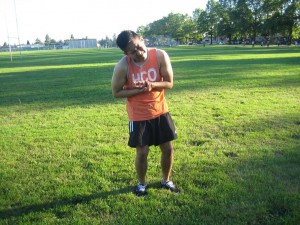Carpal tunnel syndrome is a prevalent disorder that results to hand and wrist pain, numbness and weakness. It develops if there is increased pressure on the median nerve which is responsible for providing sensation to the thumb, index and middle fingers and half of the ring finger. In addition, it also provides strength to some of the muscles at the base of the thumb.
Indications
The symptoms generally arise slowly and can manifest at any time. The initial symptoms might include:
- Tingling
- Numbness at night
- Pain in the fingers

The treatment is started by using a wrist splint at night along with non-steroidal anti-inflammatory drugs (NSAIDs) for pain relief.
Since some individuals sleep with the wrists curled, the nighttime symptoms are common and can wake one from sleep. The symptoms that arise at night time are often the first to be reported. Shaking the hands can relieve the symptoms during the initial phase of the condition.
During daytime, the usual indications include tingling and diminished sensation in the fingertips. There is also difficulty holding small objects, grasping the steering wheel while driving, writing, holding a book and using a computer keyboard.
As the condition becomes worse, the symptoms become continuous such as:
- Inability to perform tasks involving delicate movements
- Weakness in the hand
- Dropping objects
In severe cases, the muscles at the base of the thumb evidently become small.
Management of carpal tunnel syndrome
Conservative approach
The conservative approach in managing carpal tunnel syndrome is used first. The treatment is started by using a wrist splint at night along with non-steroidal anti-inflammatory drugs (NSAIDs) for pain relief.
Cortisone injections might also be given but only provides momentary relief to the symptoms. Additionally, changes or adjustments to the workplace can be done as well as changes in the hand or wrist positions used.
Surgical approach
Surgery is suggested if carpal tunnel syndrome does not respond to the conservative measures or already severe. The objective of surgery is to improve the size of the tunnel to lower the pressure on the nerves and tendons that move via the tunnel. The procedure involves cutting the ligament that lines the carpal tunnel beneath the palm.
After the procedure, there is brief discomfort lasting for 24-72 hours. Nevertheless, most individuals have full relief of the nighttime symptoms. The stitches are taken out 10-14 days after surgery. The functionality of the wrist and hand for daily activities are gradually restored with a specific exercise regimen.
Heavy activities using the affected hand are not allowed for 4-6 weeks. The recovery period varies depending on the age, general health, severity of the condition and length of time the symptoms are present. Take note that sensation and strength continues to improve over the next year.

